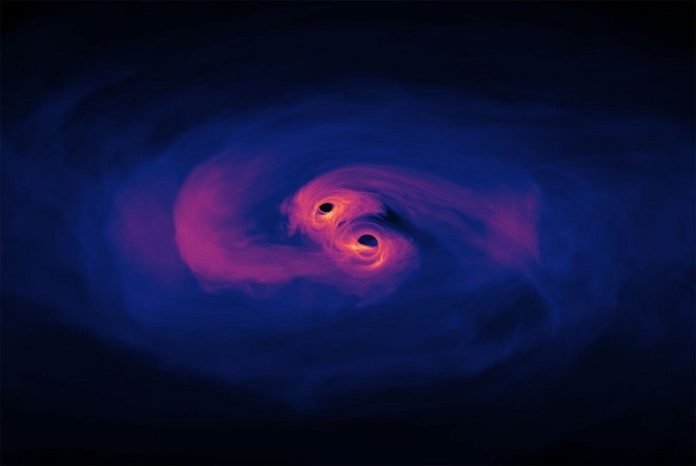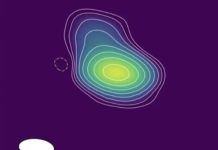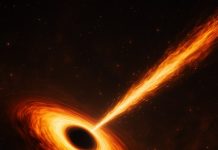
Astrophysicists at Northwestern University are using a unique galaxy-sized detector composed of dead stars called pulsars to search for elusive pairs of supermassive black holes.
In a recent study, researchers analyzed 12.5 years of data from 45 pulsars to set new limits on the gravitational wave signatures emitted by these monster black hole binaries.
The findings not only help refine the search for these elusive pairs but also emphasize the need to account for background noise generated by other supermassive black hole binaries in the universe.
The hunt for supermassive black hole binaries
Supermassive black holes, which can be billions of times the mass of our sun, reside in the centers of galaxies.
When two galaxies merge, their central supermassive black holes can form a binary system.
Detecting gravitational waves from these colossal pairs would provide insights into galaxy interactions and the evolution of the universe.
Pulsars as stellar clocks
To overcome the challenge of detecting such enormous waves, scientists established the North American Nanohertz Observatory for Gravitational Waves (NANOGrav).
This observatory employs pulsars, rapidly rotating neutron stars born from the explosion of massive stars, as cosmic clocks.
Pulsars emit regular flashes of light, and any slight deviations in the timing of these flashes could indicate the influence of a gravitational wave.
The NANOGrav team tracks 75 pulsars, with 45 used in this study, by monitoring their light beams that pass by Earth in milliseconds.
By analyzing data from multiple pulsars across the sky, researchers search for patterns indicating the presence of supermassive black hole binaries.
The gravitational waves emitted by these binaries cause space-time to stretch and squeeze, affecting the pulsars’ light beams.
One of the challenges in detecting gravitational waves is distinguishing them from the intrinsic noise generated by pulsars, known as “red noise.”
This noise resembles the broad noise generated by gravitational waves, making it essential to separate the two.
In a previous study, the NANOGrav team identified a common characteristic in the red noise generated by pulsars. However, further evidence is needed to definitively attribute it to gravitational waves.
Although supermassive black hole binaries have not yet been detected using gravitational waves, the recent study brings researchers closer to this milestone.
The refined models developed in this research provide the tightest limits yet on the strength of gravitational waves emitted by supermassive black hole pairs.
These findings can help confirm or rule out potential candidates identified using light-based telescopes, bringing scientists closer to uncovering the secrets of these colossal cosmic duos.
Through the use of pulsars as stellar clocks, astrophysicists are making significant progress in the search for supermassive black hole binaries.
The study’s findings highlight the importance of accounting for background noise and refining data analysis techniques to confidently detect gravitational waves.
As scientists continue to explore the cosmos, the detection of gravitational waves from supermassive black hole binaries holds the promise of unraveling the mysteries of galaxy evolution and the history of our universe.



